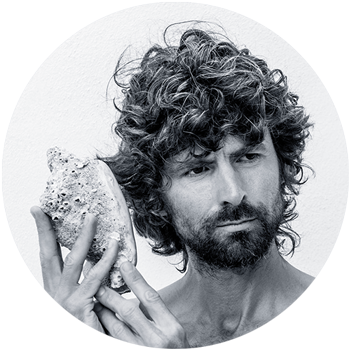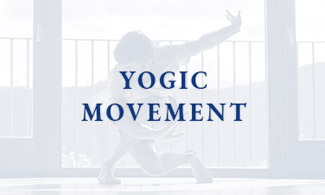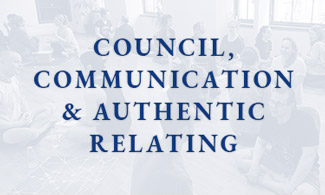
Life, Yoga and Contact Improvisation AND I Want to Live in a World Where People Dance on Train Station Platforms
My friend Paul, with whom I have co-taught a few times in different places, is a long-time Contact Improvisation practitioner. We have usually taught in relation to yama-niyama, the foundational yogic principles of how we interact with life, how we channel our energy and awareness, as laid out in Patañjali’s aṣṭāṅga yoga – the eight limbs or eight mutually supportive members of the collective body of classical yoga practice. The yama-niyama and the aṣṭāṅga are incredibly rich and robust. They provide such a beautiful resource to help calibrate to conscience and invite our life and experience more into the ‘central space’, the space of yoga, the space of the junction or the cross, where dynamism and stillness, rising and falling, expansion and contraction, can meet and draw out each other’s complementary and expansive potential; the place where the emergence, the sustenance and the falling away can all be witnessed, allowed and integrated.
The yoga perspective, the ʼdarśana’ – way of seeing – of yoga philosophy, trains us to work from gross to subtle and from micro to macro, to do what many mystics in many traditions have done through the ages, which William Blake enshrines in the opening of his ‘Auguries of Innocence’:
To see a World in a Grain of Sand
And a Heaven in a Wild Flower,
Hold Infinity in the palm of your hand
And Eternity in an hour.
My friend Paul pointed out, and I fully agreed, how contact improvisation was such a great lens to explore being human, such a great microcosm of life, and such a rich means to explore our understanding* and embodiment* of yamaniyama and yoga principles more generally.
*A note here, more than a side note:
on knowing, understanding and embodying;
on information, knowledge, understanding and wisdom.
Example One
A person takes a course on bicycle maintenance. The technician/bike mechanic teaches the person ‘everything I know’ about fixing a puncture… the thing is, everything the technician knows is beyond what can be distilled into the comprehensive tutorial. Having fixed thousands of punctures and dealt with all manner of wheel, rim, tyre, inner tube, valve, and puncture type combinations, the technician has come to an embodied understanding of the art of puncture repair.
Example Two
A person reads about swimming in the ocean, watches swimming tuturials on youtube, thinks he knows how to swim… only to find on diving into the ocean that there are all sorts of other, predictably unpredictable factors to be dealt with.
The idea
There is such a huge difference between knowledge and understanding. One movement teacher I have benefited from working with is Ido Portal. It was from him that I first heard laid out the journey from unconscious incompetence, through conscious incompetence, through conscious competence to unconscious competence. I do not know, but others have suggested that his explanation was influencesd by Nassim Taleb’s describing the difference between the unknown unknowns, the known unknowns, the known knowns and the unknown knowns. What has this got to do with yoga, the dance of life, and the art of living and dying? Please keep reading:
Illustrations
Unconscious incompetence:
- I do not know that I would be clueless as to how to safely, effectively fix a puncture on my bicycle
- I do not even know that I cannot swim, for example, I have never seen anyone swimming or perhaps ever even seen an extensive body of water
Conscious incompetence:
- I take my bike to my local bicycle repair man. He performs the whole operation with awe-inspiring ease, executing scores of precisely intentional procedures and checks with such competence that he makes it look so easy. And yet I know I could not come close to replicating his skill
- I see people swimming – that looks fun – I get in the water. They were gliding apparently effortlessly, I am splashing, thrashing around, not getting far at all, tiring quickly. Ah, okay, I am incompetent at this ‘swimming thing’ and now I know it.
Conscious competence:
- i. I ask my local bicyle repair man if he might instruct me. He does, I learn some of the checks and maneuvres that he now performs ‘automatically’. They are by no means automatic for me, but if I pay close attention, perhaps work through my checklist, remember the key points, I can change the inner tube and fix the puncture competently.
- ii. I learn to swim, I practice, quite a lot. I expose myself to a wide range of water/sea conditions. I learn about collaborating with the water, about navigating currents, eddies, whirlpools and tides and waves. When I come to potentially perilous situations, I can consult what I have learnt and respond appropriately
Unconscious competence:
- I’m out riding, I get a puncture, five minutes later, I’m racing along again, having fixed the puncture ‘effortlessly’, without having to think much about it, because the knowledge of how to perform that operation is now embedded deep in my cells, installed in the core of my being, where I can draw on it at will, and even prior to will. It emerges when it is helpful, it has become part of what I bring into the world.
- I’m swimming out at sea, I am confronted with various hazards, my competence is now so deep it has become instinctual. I have developed and refined a skillset that my deep intuition can manifest and perform through.
End of illustrative ‘more than a side note’.
The point
Yoga is a practice. What are we practising for? Yoga. We are practising being able to stay in that sweet spot where the pairs of opposites meet and draw forth each other’s complementary and expansive potentials. Sometimes this is described as walking on a tightrope, walking on a razor’s edge.
However, I prefer the image of dancing on the edge.
Dancing: heartfully, soulfully, joyfully, in the predictably unpredictable reality of life, ie, in the risk, uncertainty, danger of life.
We are equipped for this.
There is nothing more dangerous than too much safety.
And I feel more than concerned about how overly protective mainstream education, and so many of the policies enacted by our so-called governments have become. That’s another aside.
More to the point, life is uncertain. Life is dynamic, it is always changing. Creation, maintenance, destruction. This is life: Nature, that which is born. Everything that is born will die. We are nature. We were born, we will die. What will happen in between those two great changes? What can we guarantee? Change, the only certainty.
But we are equipped for this.
We have awareness. We have an array of powerful capacities and intelligences, many of which defy the limits of what our minds, languages, diagrams or formulae can render or express. Yoga is the drawing into togetherness and congruence of all these powers, so we can live more fully here and now. Only when we bring all of ourselves into this moment do we have a chance to experience all of who we are.
One of the great iconic exponents of this yoga, this art of living and dying, is Śiva Nāṭarāja, Śiva the Lord of the Dance: of creation, maintenance and destruction, of ignorance/veiling and remembering/revealing. When we bring ourselves into balance, when we are able to draw on our integrated powers of awareness, we can dance in dynamic equilibrium right here in the midst of the tumult, challenge, risk, beauty and whirling wonder of life.
So let us dance.
Let us dance.
In the classical Indian darśana, or ‘way of seeing’, dance is considered the most ‘primary’ art form. In painting for example, there is the painter, the paints, the brushes/tools/instruments and the painting. In scuplture, the sculptor, the tools, the materials and the scuplture. Dance and dancer however: where does one end and the other begin?
Dance is such a great lens for inquiry, and such a great method for exploration of the art of living and dying. This is especially the case for Contact Improvisation Dance: the form/method/art/way, where, it might be said, the point of contact leads the dance, where the junction of our awareness and that with which we are dancing/interacting is the dynamic centrepoint.
And so I was so inspired to be reminded of this today when I read an email shared by one of the wonderful group of seekers I am currently exploring the Āditya Hṛdayam with in the current online course.
Here is an excerpt from Laura’s mail to our group, with my italics for emphasis:
I used to run a dance company. We danced a style called contact improvisation. I love it because it invites pure presence. It is improvised, so no steps are provided, so the dance can become dangerous if one is not fully present. Contact alludes to being lifted and dropped, feeling the earth’s gravity as a force. You can see what I mean in this lovely video: Rising Falls
It is very common to perform outdoors and with kneepads (I have as many pairs as a skateboarder would, I think!).
I recommend watching the video. It shows two people contact-improvisation-dancing in a train station. I find it beautiful.
And this reminds me, of something I feel quite strongly:
- I want to live in a world where people dance on train station platforms
- I want to live in a world where people dance in public, on station platforms, on the street, in the car park, down the aisles of shops, to their chairs at hostelries, between and in their lessons at school…
- I want to live in a world where people dance on train station platforms.
Now, true story
A few years ago I was at York railway station, it was late afternoon on a late summer’s day. I had to change trains at York. The connection I needed was leaving from platform five, but not for twenty or more minutes. Platform five was all in the shade. But I notice that across the way, down the end of platform nine, there is open space in the sun. So I make my way there and feel the sun’s warmth on my skin. I have been on the previous train a couple of hours, rather confined, somewhat cooped up. I want to move, I’d like to sing, really I feel like dancing. So I do. Nothing particularly demonstrative. I play a movement game with myself. Setting myself the challenge of moving my arms in various combinations with certain steps, inviting energy, lymph and vitality to move and re-invigorate me after the extended day of travel, and at the same time inviting new neural connections as I have to consciously focus and concentrate on the novel movement co-ordination… the sun’s in the sky, the day is warm and calm, I am feeling good.
I can see the shaded platform five across the way. I can see that part of the platform where the train I’ll be catching is going from through a gap in the wall. People can see me too. Twenty minutes later I am on that train. It’s standing room only and I am near one of the entrances, near a man with his son, who is sat in a pushchair:
‘Hey dad, it’s the crazy man!’ The infant says, pointing up at me, and making me smile.
‘Don’t say that, that’s rude.’ The father gently chides his son.
‘But he was waving his arms around across the station.’
‘That doesn’t mean he’s crazy.’
I am almost laughing now, and I join the conversation.
‘No that’s okay, I was waving my arms around, and it might look crazy, but that’s okay. I feel a lot better for it. I’d been sat down for two hours on another train so it was good to move a bit you know? Anyway, sometimes the world is a bit crazy and it’s good to remember that we can be too.’
‘What do you think to that?’ Asked the dad. ‘You like to get up and run when we get home after a trip don’t you?’
‘Yeah,’ says the little boy. He keeps looking at me with a rather quizzical look.
‘Are you a dancer?’ He now asks me.
‘Well, I think life’s a kind of dance, so I’m trying to be.’
‘Leave the man in peace now Jacob,’ says the father.
‘It’s alright,’ I say, hoping that this boy will stay crazy enough to keep inquiring all his life.
Article Photo: I really would have liked to use a photo of me dancing on York train station platform, but I do not have one, so have used this one of the meadow dancing under the sunset last week.

James Boag | Whole Life Yoga
The yoga of the whole human being. Practical philosophy, storytelling, movement, inquiry, looking in ways that reach beyond our habitual ways of looking.
Listen to James’ unique whole life yoga perspectives on the WHOLE LIFE YOGA podcast.











